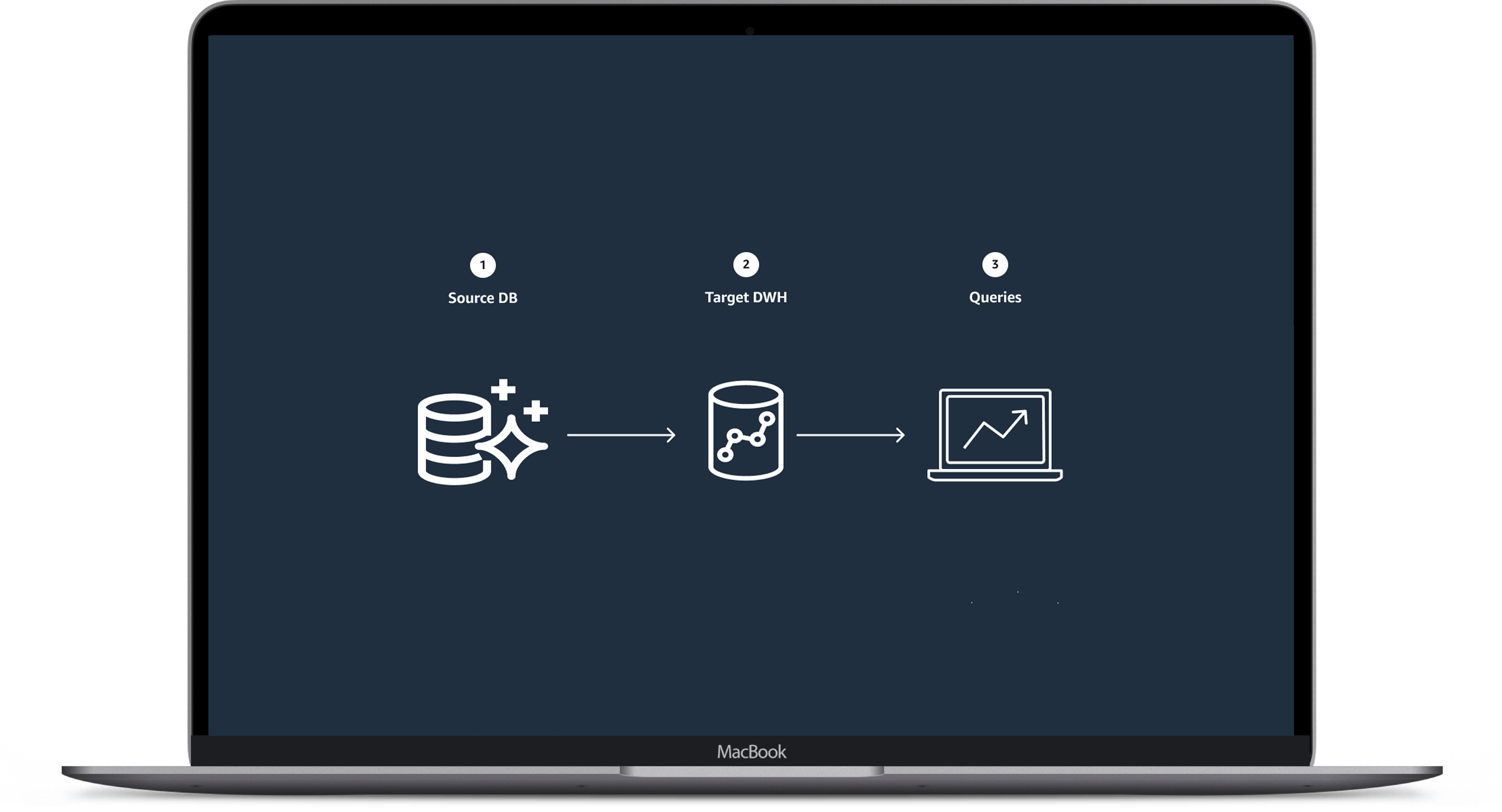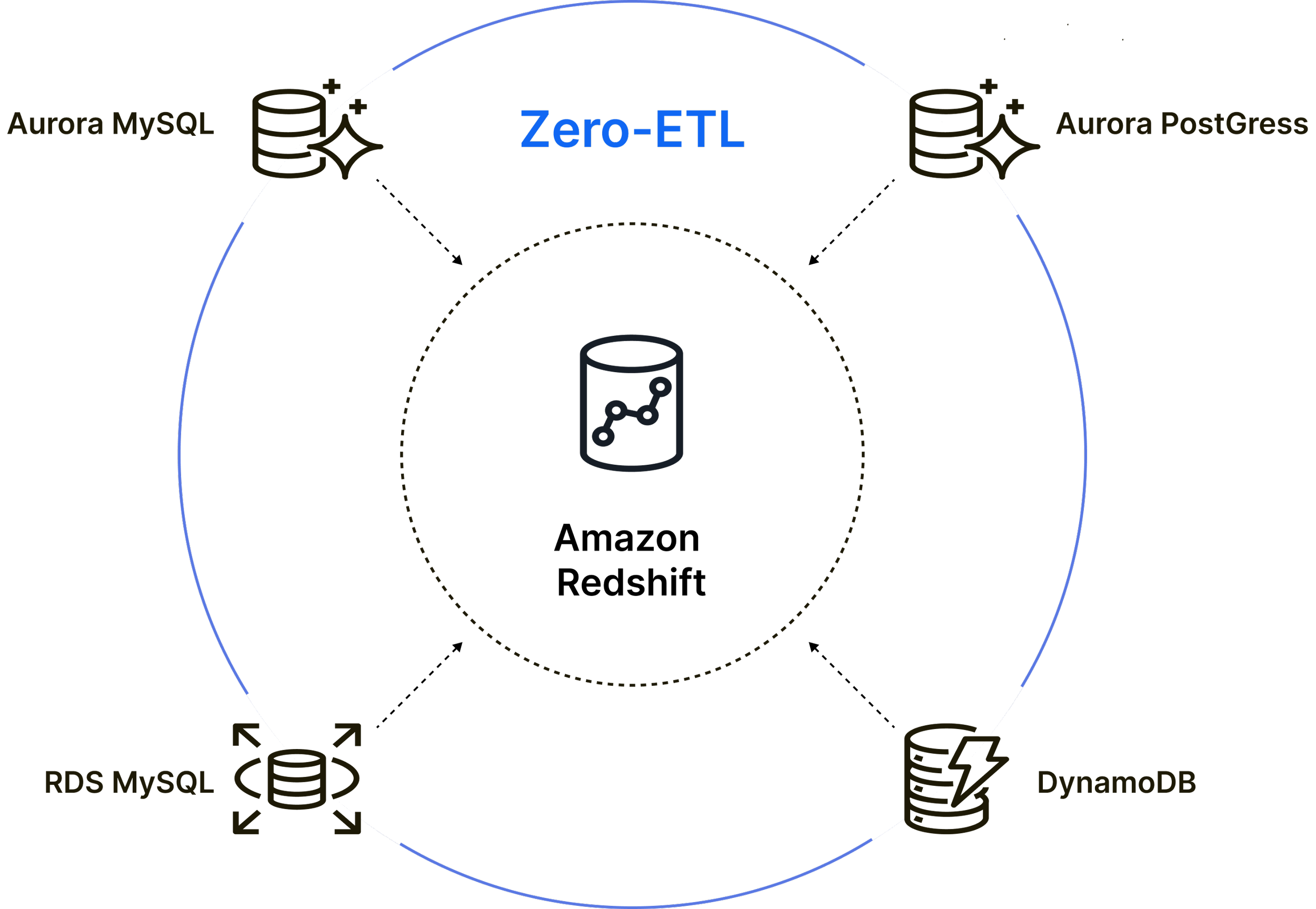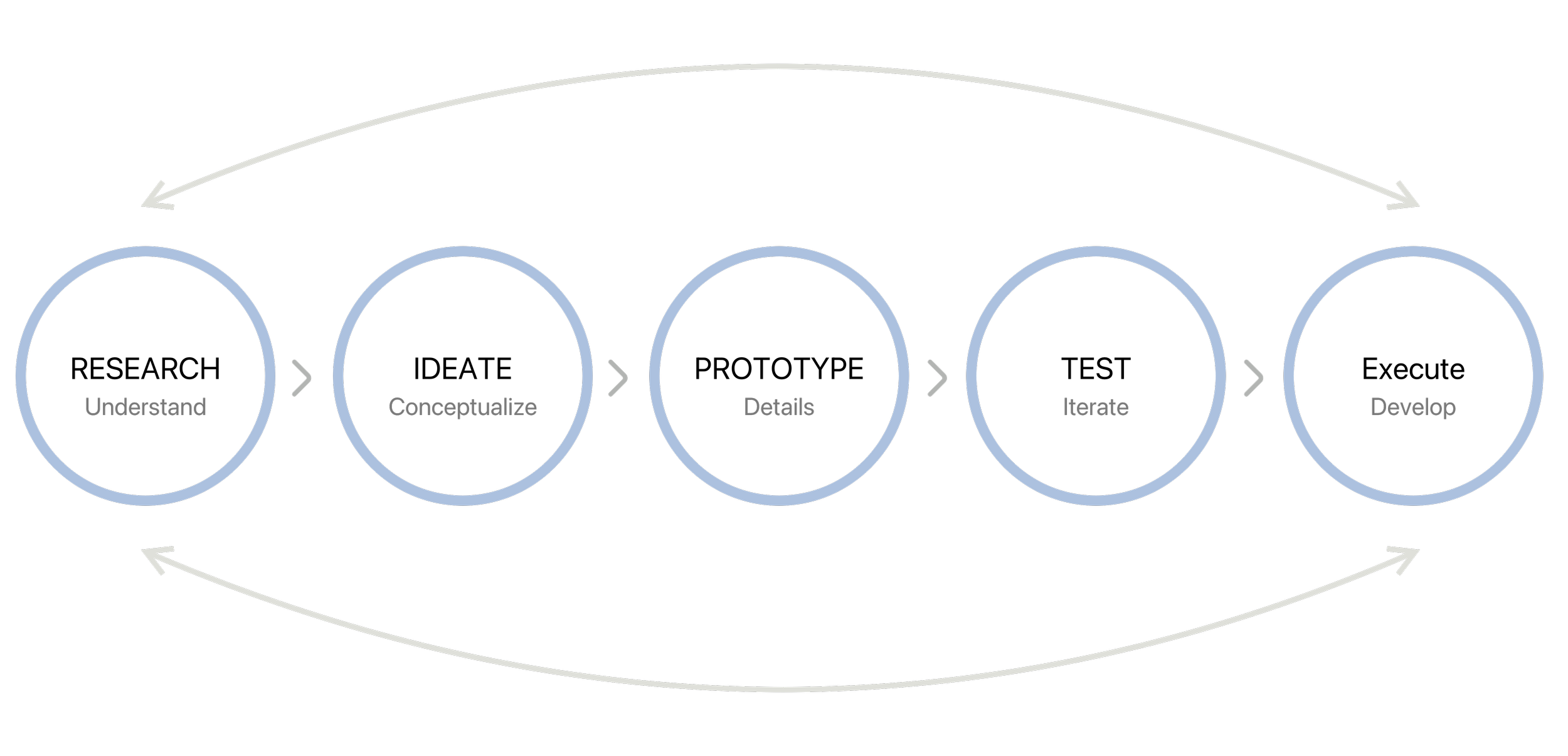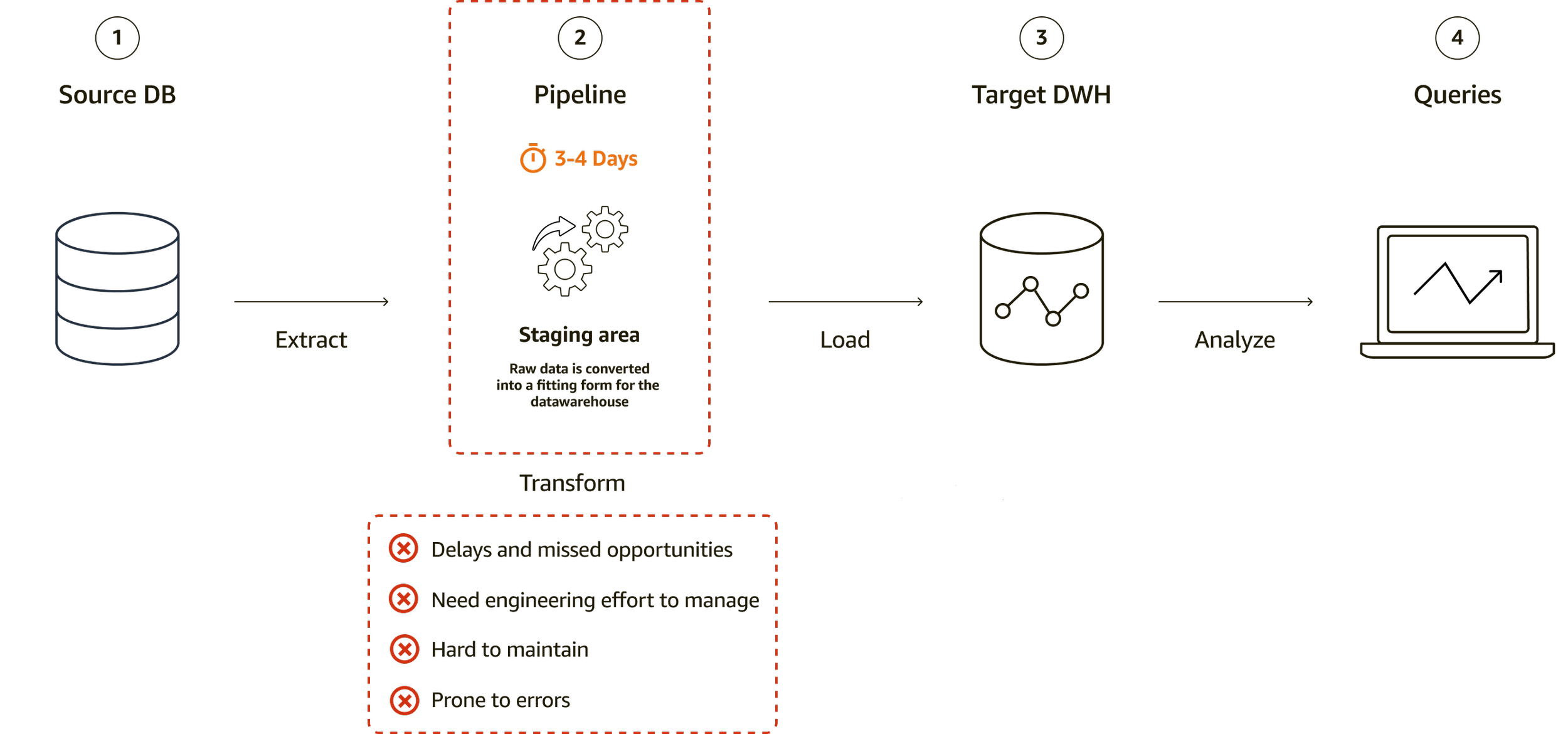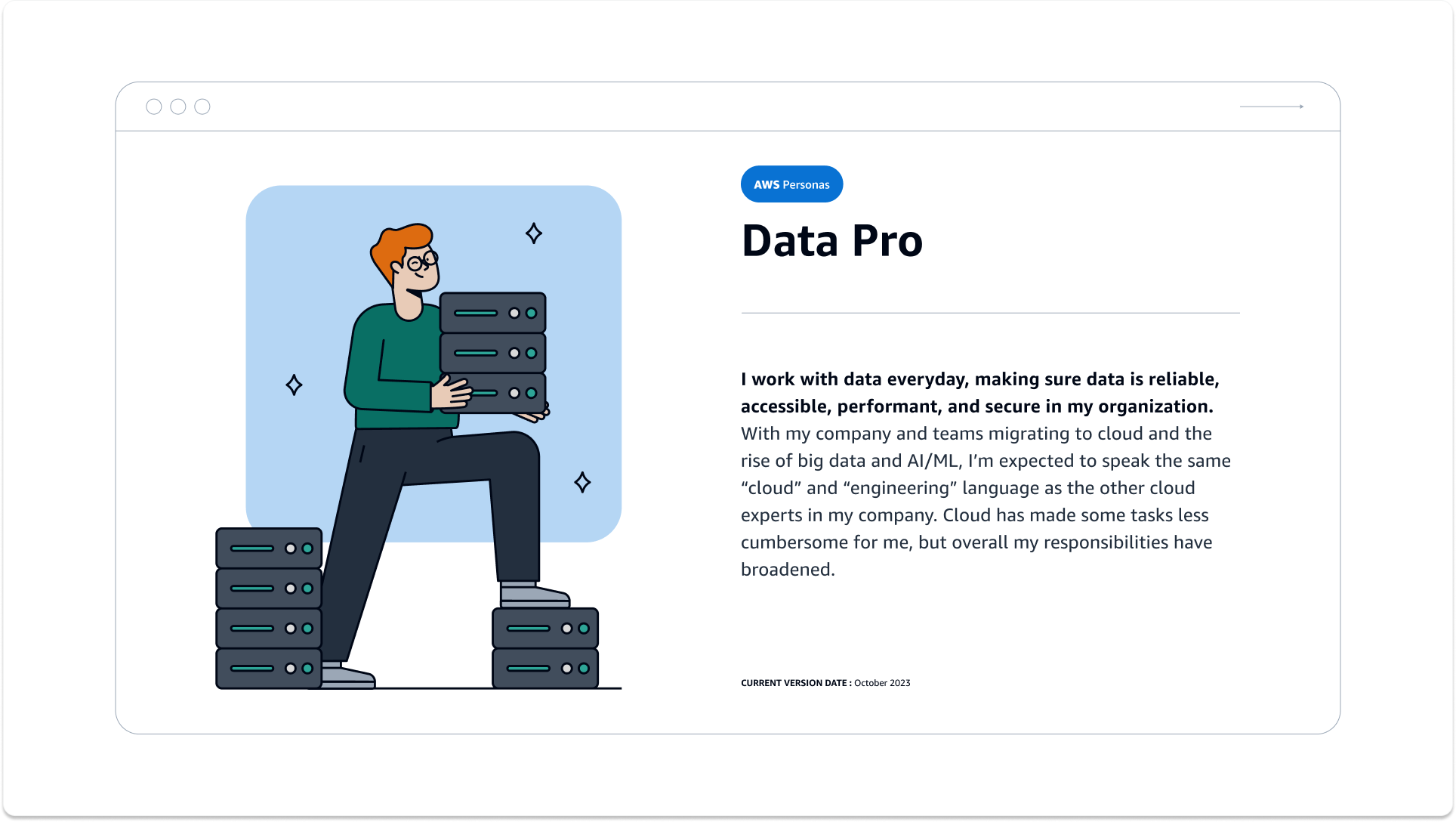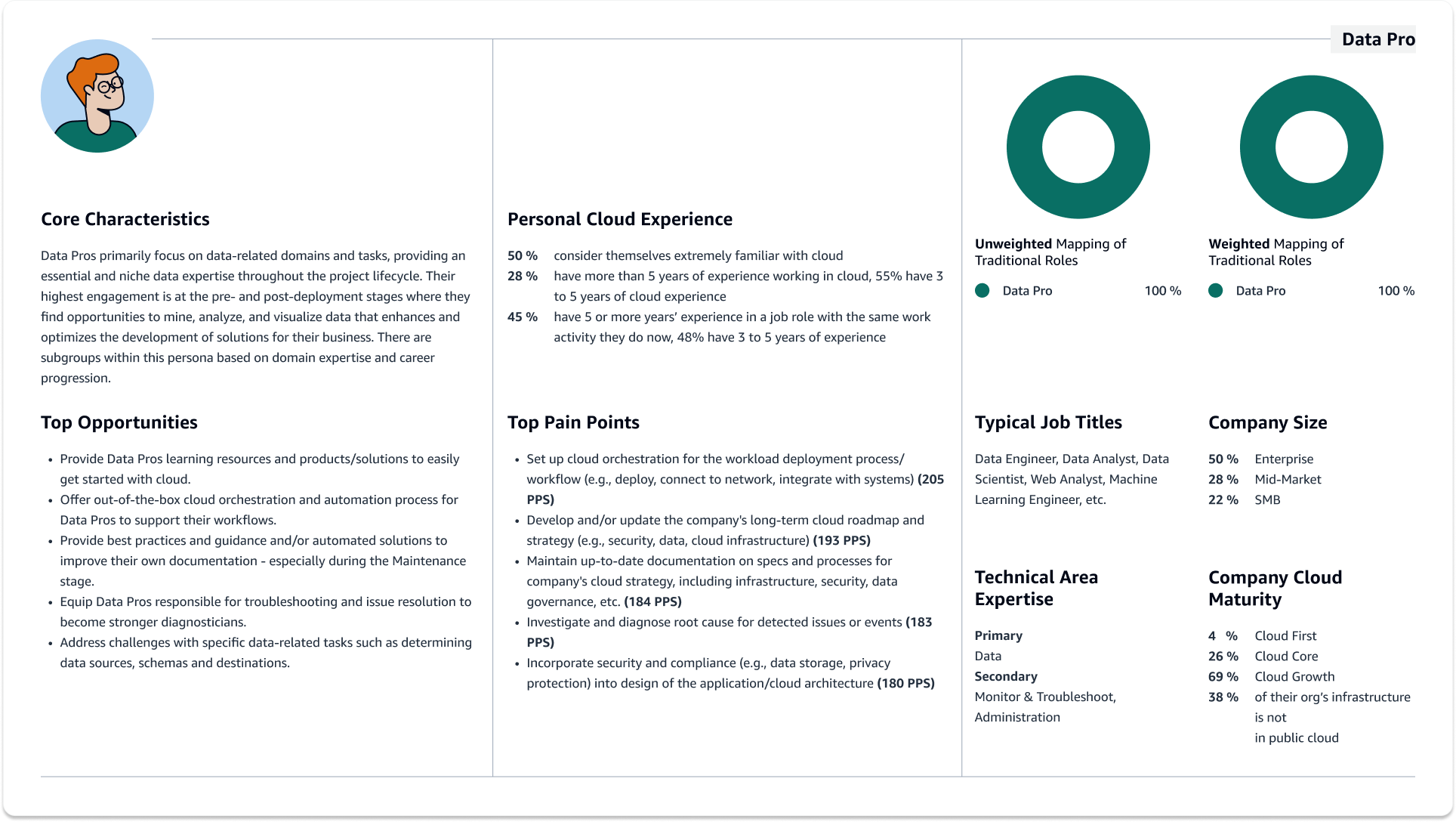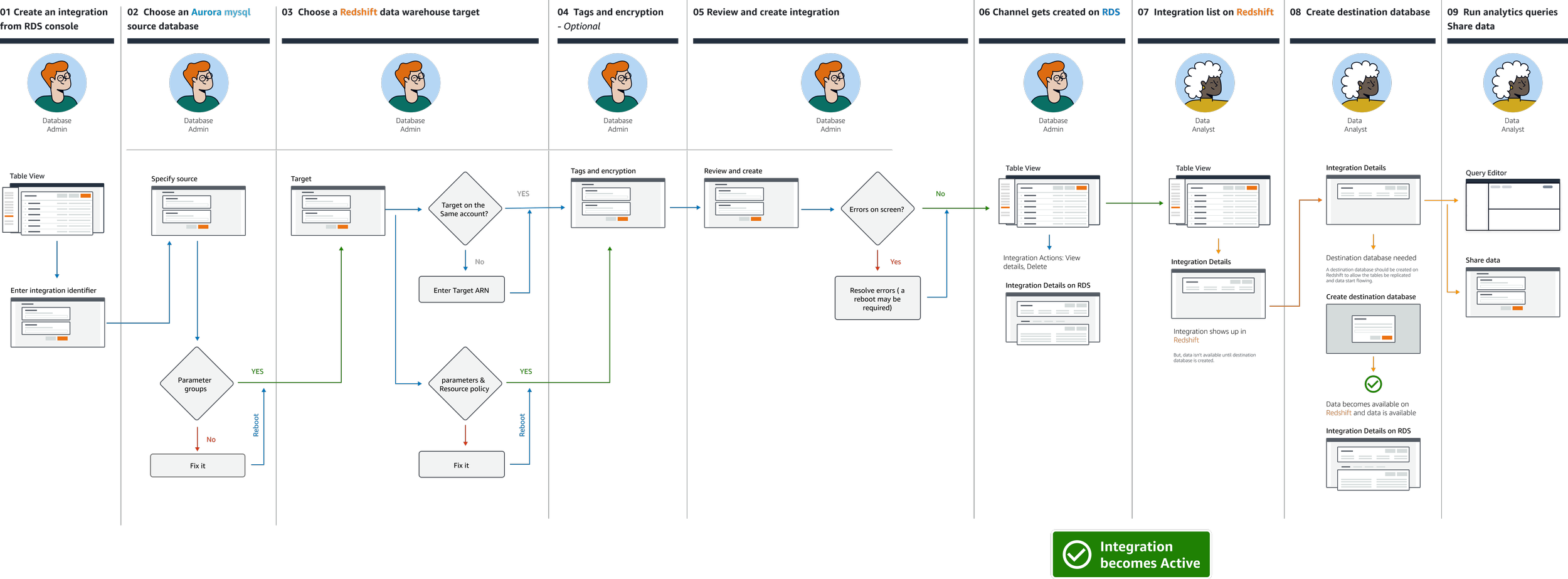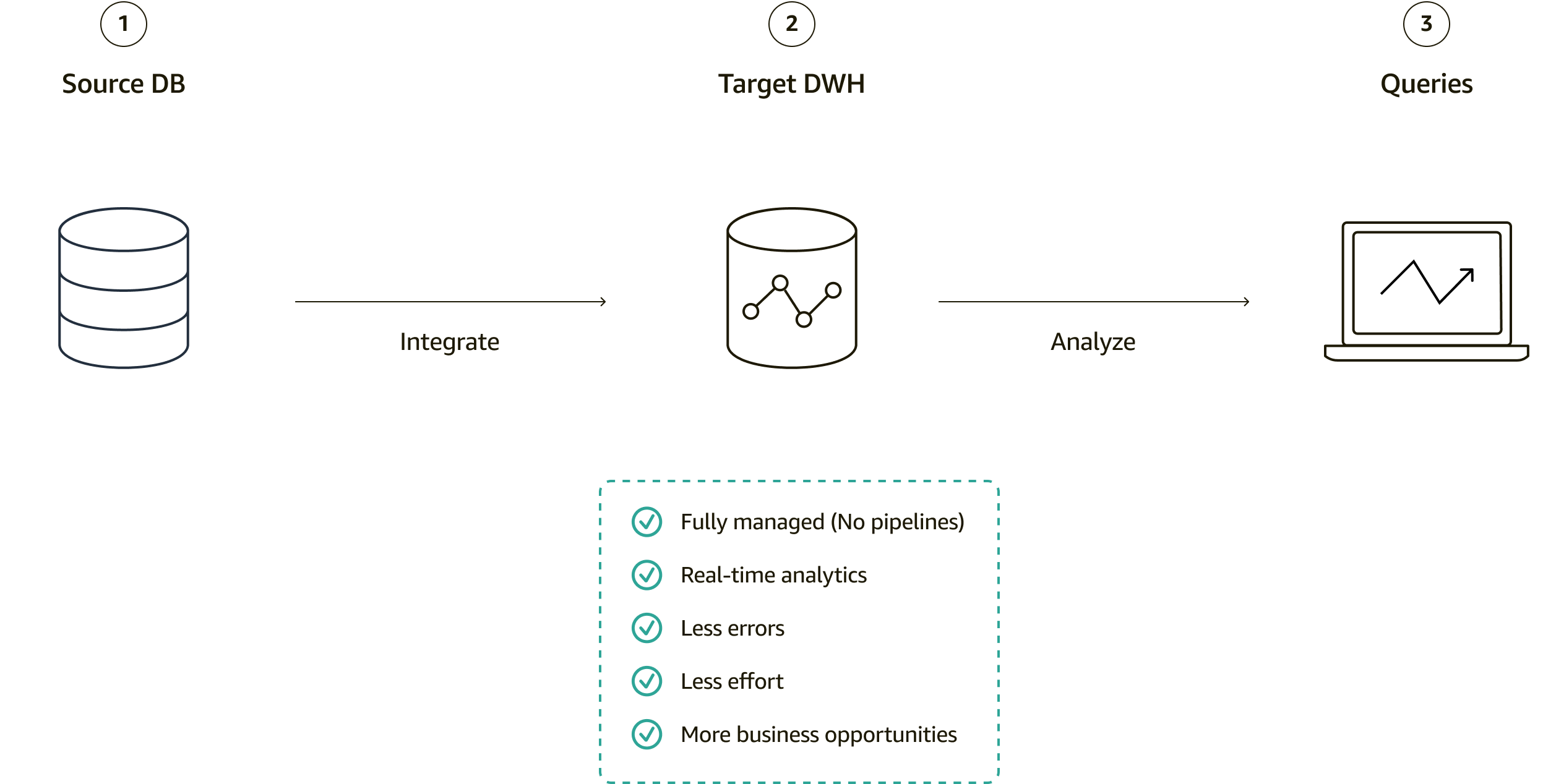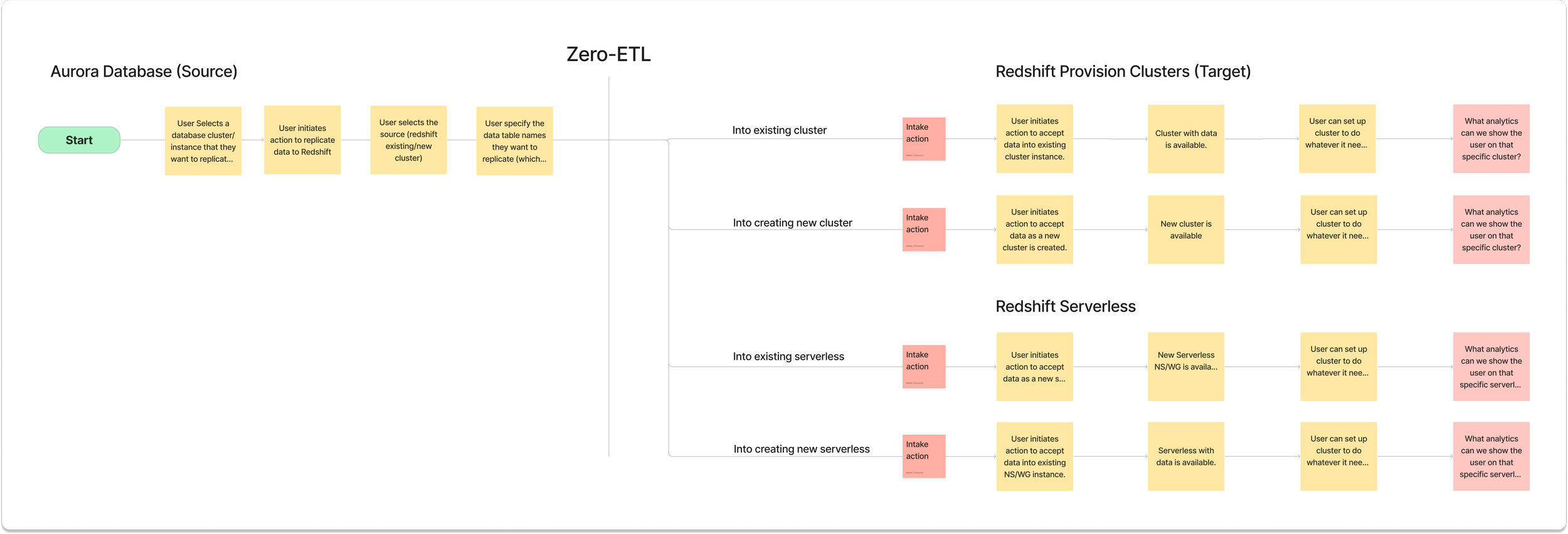Role: Senior UX Designer
Company: Amazon Web Services
Duration: June 2022 - November 2023
Amazon Redshift
Amazon Redshift is a fully managed, scalable cloud data warehouse that helps customers gain insights faster through secure and easy-to-use analytics.
Zero-ETL integration enables Amazon customers to run near real-time analytics and machine learning on petabytes of transactional data by offering a fully managed solution for making transactional data available in Amazon Redshift within seconds of being written into the source.
So far, we have completed Zero-ETL integrations from 4 different AWS databases and services into Amazon Redshift.
Prototype
Project timeline
My individual contribution
Led UX strategy for Amazon Redshift's Zero-ETL initiative, a large-scale cross-service integration project connecting multiple AWS services. As the core UX designer for Redshift—the central destination for all Zero-ETL integrations—successfully navigated complex stakeholder relationships across five AWS teams to:
Streamline cross-team communication and align diverse technical requirements into a cohesive user experience
Transform complex data integration workflows into intuitive user interfaces through comprehensive design research and iterative prototyping
Implement data-driven design methodology using user research, analytics, and preview program feedback to validate design decisions
Guide development teams across multiple services to ensure consistent design implementation and user experience
Drive end-to-end UX design process from requirements gathering through launch, balancing business objectives with technical constraints and user needs
Our process
01. Research
Problem Statement
Traditional ETL (Extract-Transform-Load) processes for data warehouse analytics involve complex data pipeline management that presents significant operational challenges:
Lengthy Processing Cycles: Full ETL cycles typically require multiple days to complete
Delayed Decision Making: Extended processing times lead to outdated analytics and missed business opportunities
Resource Intensive: Demands substantial engineering resources for pipeline development and maintenance
High Maintenance Overhead: Complex pipelines require continuous monitoring
Increased Risk: Multiple transformation steps create more points of potential failure and data inconsistencies
Problem: ETL (Extract-Transform-Load)
User Research & Persona Development
Conducted thorough stakeholder research to define target users for Zero-ETL integrations:
Executed stakeholder interviews across multiple AWS teams to gather business requirements and user insights
Analyzed user demographics, technical backgrounds, and workflow patterns
Developed detailed user personas to capture roles and responsibilities, Technical expertise level, Common pain points and challenges, Key workflow requirements, Success metrics and goals
Customer Journey Analysis for cross-service Integration Flow
Developed comprehensive customer journey maps to visualize end-to-end integration workflows:
Mapped complete user path from source service configuration through data analysis in target system
Identified critical pre-requisite steps required for successful integration setup
Uncovered process gaps and potential friction points across service boundaries
Documented key user touch-points and dependencies between AWS services
Leveraged journey insights to streamline cross-service user experience and reduce setup complexity
02. Ideate
Ideation and problem solving
Complex data pipeline management in traditional ETL processes has long been a bottleneck for data warehouse analytics. To overcome these operational challenges, organizations needed a solution that would automate and manage the entire data flow from source to destination, effectively eliminating the need for manual pipeline management.
Solution: Zero-ETL
Workflow Workshop
Led a stakeholder workshop to map the workflows and identify opportunities to optimize and simplify the user experience, resulting in a more efficient process with reduced friction points.
03. Prototype
High fidelity prototyping
Created high-fidelity wireframes and interactive prototypes for usability testing and also to communicate design ideas to the engineering team.
04. Test / Iterate
Data-Driven Research & Testing
Implemented a comprehensive user research strategy leveraging multiple data sources to optimize the product for GA release at re:Invent 2023:
Conducted systematic usability testing sessions to identify user friction points and workflow bottlenecks
Analyzed product usage patterns through detailed analytics tracking
Gathered real-world feedback through private and public preview programs
Customers pain points:
Users experienced difficulty configuring settings for both source database and target data warehouse environments. The alerts and notifications lacked sufficient detail and clarity, leaving users unaware of the requirement to establish parameters and resource policies for the target environment.
High failure rate due to Missing/incorrect:
Source and target parameters
Target resource policy settings
Public Preview Journey
Through our analysis of the customer journey, we identified key gaps and pain points, then collaborated with the team to develop solutions that enhanced the overall experience.
Revised Journey for GA
Based on analytics data and user feedback gathered during the public preview, we refined the user journey to include comprehensive pre-requisite checks, significantly reducing failure rates and customer support issues.
05. Results
Failure rate decreased:
After intensive discussions with all stakeholders, careful analysis and customer testing, led a customer-centric redesign that reduced error rates by 58% by implementing automated error handling and in-line fixes.
The solution eliminated context switching for users and streamlined their workflow. Customer satisfaction scores increased from 25% to 90% within the first month of launch, with customers specifically praising the intuitive error recovery process.
Customer data:
1- United Airlines, started a successful proof of concept (POC) on Aurora to Redshift Zero-ETL integration, which streamlined data workflows, resulting in a 33% cost reduction and annual savings exceeding $204K.
2- Motive Technologies use of Zero-ETL integrations across three databases simplified their operations, saved 100K annually in maintenance costs and unlocking new customer insights capabilities.
